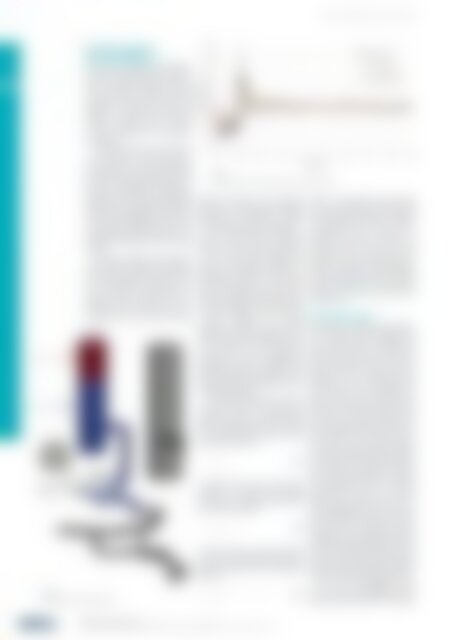atw - International Journal for Nuclear Power | 10.2020
Description Ever since its first issue in 1956, the atw – International Journal for Nuclear Power has been a publisher of specialist articles, background reports, interviews and news about developments and trends from all important sectors of nuclear energy, nuclear technology and the energy industry. Internationally current and competent, the professional journal atw is a valuable source of information. www.nucmag.com
Description
Ever since its first issue in 1956, the atw – International Journal for Nuclear Power has been a publisher of specialist articles, background reports, interviews and news about developments and trends from all important sectors of nuclear energy, nuclear technology and the energy industry. Internationally current and competent, the professional journal atw is a valuable source of information.
www.nucmag.com
You also want an ePaper? Increase the reach of your titles
YUMPU automatically turns print PDFs into web optimized ePapers that Google loves.
<strong>atw</strong> Vol. 65 (2020) | Issue 10 ı October<br />
RESEARCH AND INNOVATION 516<br />
| Fig. 3.<br />
HDR test facility modelling approach.<br />
Modelling approach<br />
with OpenFOAM-v7<br />
During the modelling of the HDR test<br />
facility with OpenFOAM-v7 dif ferent<br />
aspects concerning initial and boundary<br />
conditions, meshing process,<br />
equation of state (EOS) and overall<br />
simulation parameters where optimized<br />
to a point where simulation<br />
stability, computation time as well<br />
as result quality are in reasonable<br />
equilibrium.<br />
The meshing process revealed that<br />
it is necessary to model the whole<br />
cooling circuit as only modelling the<br />
part between break nozzle and RPV<br />
results in unneglectable deviation of<br />
the pressure dynamics. Furthermore,<br />
making a well-structured hexahedral<br />
mesh with the commercial program<br />
ANSYS ICEM (Figure 3) instead an<br />
unstructured hexahedral mesh with<br />
snappyHexMesh significantly improves<br />
simulation stability as well as result<br />
quality.<br />
In order to model the check valve,<br />
the boundary condition activeBaffle<br />
Velocity was modified so closure times<br />
can be modelled according to the<br />
user’s demands. As an alternative a<br />
dynamic mesh approach can be<br />
implemented using a fixed wall in a<br />
rotating area to close off the pipe<br />
| Fig. 4.<br />
Simulation results <strong>for</strong> the damped check valve implementation.<br />
diameter. However, this approach<br />
increases the computation time while<br />
lowering the simulation stability<br />
without improving the result quality.<br />
In terms of boundary conditions, it<br />
leads to much better simulation<br />
stability to apply saturation pressure<br />
at the break nozzle (Figure 3)<br />
instead of atmospheric pressure as<br />
atmospheric pressure is much lower<br />
than vapor pressure <strong>for</strong> the experiments.<br />
This approach also allows <strong>for</strong><br />
a better comparison between be<strong>for</strong>e<br />
and after applying a cavitation model.<br />
Initial condition wise system<br />
pressure is applied to the whole<br />
domain while water temperature is set<br />
to 220 °C and non-condensable steam<br />
at the RPV top is set to saturation<br />
temperature at 285 °C (Figure 3).<br />
Applying stationary operation state<br />
flow conditions does not influence the<br />
simulation results compared to a zero<br />
velocity initialization.<br />
To capture pressure driven density<br />
variations of water and steam linear<br />
equations of state are used <strong>for</strong> both<br />
phases neglecting non-linear change<br />
of state variables. For steam the ideal<br />
gas equation [GRE19]<br />
<br />
(13)<br />
is applied with R g as the special gas<br />
constant. To compute the density<br />
variation <strong>for</strong> water the stiffened EOS<br />
(perfectFluid) [GRE19]<br />
<br />
(14)<br />
is used where p 0 is a reference density<br />
and the so called fluid ‘constant’ R f<br />
can be evaluated with the relationship<br />
[GRE19]<br />
<br />
(15)<br />
where c is the speed of sound. Using<br />
real gas equations like the approach<br />
from Peng and Robinson is possible<br />
in OpenFOAM but results in higher<br />
computation times. However, in<br />
literature deviation up to 30 % are<br />
described when using linear EOS<br />
especially <strong>for</strong> gases at high pressure<br />
[SIR17]. In future work the influence<br />
of non-linear change of state variables<br />
will be conducted. In order to model<br />
turbulence, the SST k-ω-model from<br />
Wilcox is used.<br />
Simulation results<br />
The pressure evaluation at measurement<br />
position <strong>for</strong> the damped check<br />
valve implementation (Figure 4)<br />
shows good results with cavitation<br />
modelling (red) while without cavitation<br />
modelling larger deviation<br />
compared to the experiment data<br />
(black) occur. After detonating the<br />
burst disk (0.0 s) the reflection behavior<br />
of the pressure balance wave<br />
between the break nozzle and the RPV<br />
(0.0-0.1 s) is in decent agreement to<br />
the experimental data <strong>for</strong> both simulations.<br />
While the timing of the pressure<br />
peak (0.1 s) is in good comparison<br />
to the experimental data the peak<br />
is overshot without cavitation modelling<br />
(150 bar). Applying cavitation,<br />
the pressure peak decreases towards<br />
the experimental value at 120 bar<br />
improving the results as cavitation<br />
effects at the check valve are considered<br />
(Figure 5). After the pressure<br />
peak the pressure decrease is undershot<br />
and the low frequent pressure<br />
amplitude is not modelled with either<br />
simulation approach leading to deviations<br />
to the experimental data. In the<br />
report of KIT strong pipe oscillation<br />
are mentioned after the pressure peak<br />
which can influence fluid properties.<br />
For the non-damped check<br />
valve implementation (Figure 6), the<br />
pressure peak (0.09 s) is overshot<br />
Research and Innovation<br />
Water Hammer Simulation in Pipe Systems with Open Source Code OpenFOAM ı Paul Fuchs and Marco K. Koch

















